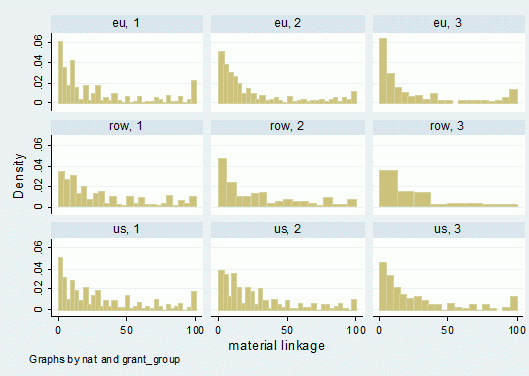The financial crisis in Ireland has prompted much soul searching. Irish policymakers have not been spared this process. Words like “repositioning” and “revision” and “revisit” could be construed by critics to read “u-turn”. But when Ireland’s policymakers sit down to review how well foreign direct investment (FDI) has worked, there will be few u-turns.
Even during the fallout from the banking crisis, FDI has helped to shore up Irish jobs through the relative resilience of multinational-enterprise-fuelled exports. This is why, despite the continuing public condemnation of Irish mismanagement in banking as well as other areas, FDI policy has been spared criticism. Nevertheless, the present banking crisis has arguably unleashed a damaging loss of global goodwill and provides an apt moment to take stock of FDI policy in Ireland and more generally in other developed countries.
Benefits of foreign-local partnerships
Nowhere are the effects of foreign investment more keenly felt by native Irish firms than when foreign players such as US multinationals contract directly with local suppliers for the procurement of research, technical or professional services, or a physical input such as a laboratory installation. This explicit collaboration between foreign and local firms is what we mean by a linkage, the economic effects of which are well documented. Foreign firms pass on valuable knowledge and expertise while spurring innovation (see Blalock and Gertler 2007, Girma et al. 2008, and Javorcik 2004). Most visibly, collaborations between FDI and local firms create jobs. An article in the Irish Times recently claimed that in Ireland the multiple is about 0.7 local jobs for each direct job created by a foreign firm (Irish Times 2010).
Yet the pickings from FDI are getting ever thinner as more and more countries compete for global investments. According to the joint survey between the National Irish Bank and FDI Intelligence (2010), the number of jobs created by FDI fell 25% globally in 2009. In Ireland the drop was 42%. Yet for linkages to work, it is imperative that local firms are fully equipped to work in a foreign partnership and for this they need to possess the requisite technological knowhow (see Yaşar and Morrison Paul 2009).
There remain several good reasons for Irish policymakers to encourage linkages. Linkages help create jobs, improve the know-how of local industry and most importantly in the context of the global crisis in banking, linkages represent a mode to soften macroeconomic shocks.
New evidence on the benefits of FDI in Ireland
This is where our study (Görg et al. 2010) comes in. We examine information on the linkages formed between around 1100 foreign plants in Ireland and their local suppliers between 1983 and 2002. Unlike work which has been carried out before, we use unique information on grants that were extended by the Irish Industrial Development Agency during this period. One qualifying criterion for grant support is the potential for supplier linkages to be set up with the aid of the agency’s funding.
Because our data also contain information on the home country of the foreign plant, we are also able to explore the hypothesis that if foreign plants are able to generate linkages with local suppliers, they are more likely to do so when the foreign plants come from a country which is geographically/culturally distant from the FDI host country, as argued by Rodríguez-Clare (1996).
Foreign-local partnerships are not manufactured
A good starting point is to show to what extent foreign firms in Ireland formed linkages with local firms. Linkages are defined in the standard way by summing materials and components which are purchased by local suppliers and dividing the value by the total value of intermediates used in the production of the final good. Plants typically procure 29-30% of their total inputs on domestic markets. This average value of 30% masks the foreign firms in Ireland with exceedingly low and high levels of local procurement.
Figure 1 highlights the U-shaped distribution of foreign firms engaged in linkages. We distinguish firms into three nationality categories (US, European and Rest of World (ROW)) and three groups according to whether they receive above or below average grants, or no subsidies at all. Note from the figure that many foreign firms are completely inactive and develop no partnerships with local suppliers although a remaining few are highly active. This gives rise to the U-shaped procurement pattern.
Figure 1. Pattern of linkages with Irish suppliers
Note: grant group 1: low grant (grant_ratio = 0); grant group 2: medium grant (grant_ratio < 3.48 [90th percentile]), grant group 3: high grant (grant ratio > 3.48)
To help us isolate the true effect of grant aid on creating linkages between local and foreign firms, and to reduce concerns that we may be overlooking other possible influences, we apply a 2-step endogenous Tobit framework (see Görg et al. 2010 for details). We find that higher grant intensities to ROW plants lead to higher linkages while there is no effect for European and US firms. Our evidence strongly shows how ROW firms apply financial incentives to search for and team up with Irish suppliers, but that EU and US firms may have other means for achieving linkages which are relatively independent of Government aid.
Why are US and EU multinationals different?
But why should affiliates of US and EU multinationals behave any differently from their Chinese or Japanese counterparts? The answer may lie with Rodríguez-Clare (1996) who argues that it is reasonable to expect communication costs to increase with geographical distance and with the cultural, social, and legal differences between the regions wherein the headquarters and the production plant are located. In line with Rodríguez-Clare’s reasoning, multinationals should generate more linkages when they come from regions that are farther away and more different in terms of their cultural, social and legal structures. This intuition may well underscore differences in how EU/US affiliates respond to Irish Government funding compared with affiliates of firms from the Rest of the World, for example Japanese or Chinese multinationals.
Otherwise, our evidence shows that the formation of linkages is relatively insensitive to grant aid. So what types of firms are most likely to form linkages with local suppliers? The most promising candidates for linkage formation are relatively small foreign firms with not enough internal capacity to be fully self-sufficient. Our finding that “small is good” for linkages is seen in the positive sign for multinational employment. Generally, linkages take time to cultivate as seen in the importance played by the length of time that the foreign firm has been in the Irish market. The “embeddedness” of foreign firms with time into local markets has also been reported by other studies, most recently by Alfaro and Rodríguez-Clare (2004).
Policymakers may well despair of being able to make linkages happen simply by awarding grants to foreign firms. Linkages appear to evolve organically and, except for linkages from affiliates of Chinese, Japanese and other Rest of World firms, are relatively insensitive to grant aid. Policymakers would therefore do well to avoid Local Content Requirements as a stipulation for grant aid. Instead they should work towards reducing partner search costs (hosting information evenings, facilitating networking opportunities for Irish firms) and most importantly they should help potential Irish suppliers to step up to an upwardly mobile technology mark.
References
Alfaro, Laura and Andrés Rodríguez-Clare (2004), “Multinationals and Linkages: an Empirical Investigation”, Economia, 4:113-169.
Blalock, Garrick and Paul Gertler (2008), “Welfare Gains from Foreign Direct Investment through Technology Transfer to Local Suppliers”, Journal of International Economics, 74:402-421.
Collins, John (2010), “IDA's plan to create 105,000 jobs could be a hard sell”, Irish Times, 8 March.
Girma, Sourafel, Holger Görg, and Mauro Pisu (2008), “Exporting, Linkages and Productivity Spillovers from Foreign Direct Investment”, Canadian Journal of Economics, 41:320-340.
Görg, Holger, Aoife Hanley, and Eric Strobl (2010), “Creating Backward Linkages from Multinationals: Is there a Role for Financial Incentives?”, Review of International Economics, forthcoming.
Javorcik, Beata (2004), “Does Foreign Direct Investment increase the Productivity of Domestic Firms? In search of Spillovers through Backward Linkages”, American Economic Review, 94:605-627.
National Irish Bank/FDI Intelligence (2010), “Ireland Suffers Sharp Fall in Inward Investment in 2009 Though Still Punches Above Weight”.
Rodriguez-Clare, Andrés, “Multinationals, Linkages and Economic Development”, American Economic Review, 86:852-873.
Yaşar, Mahmut and Catherine Morrison Paul (2009), “Size and Foreign Ownership Effects on Productivity and Efficiency: an Analysis of Turkish Motor Vehicle and Parts Plants”, Review of Development Economics, 13:576-591.






